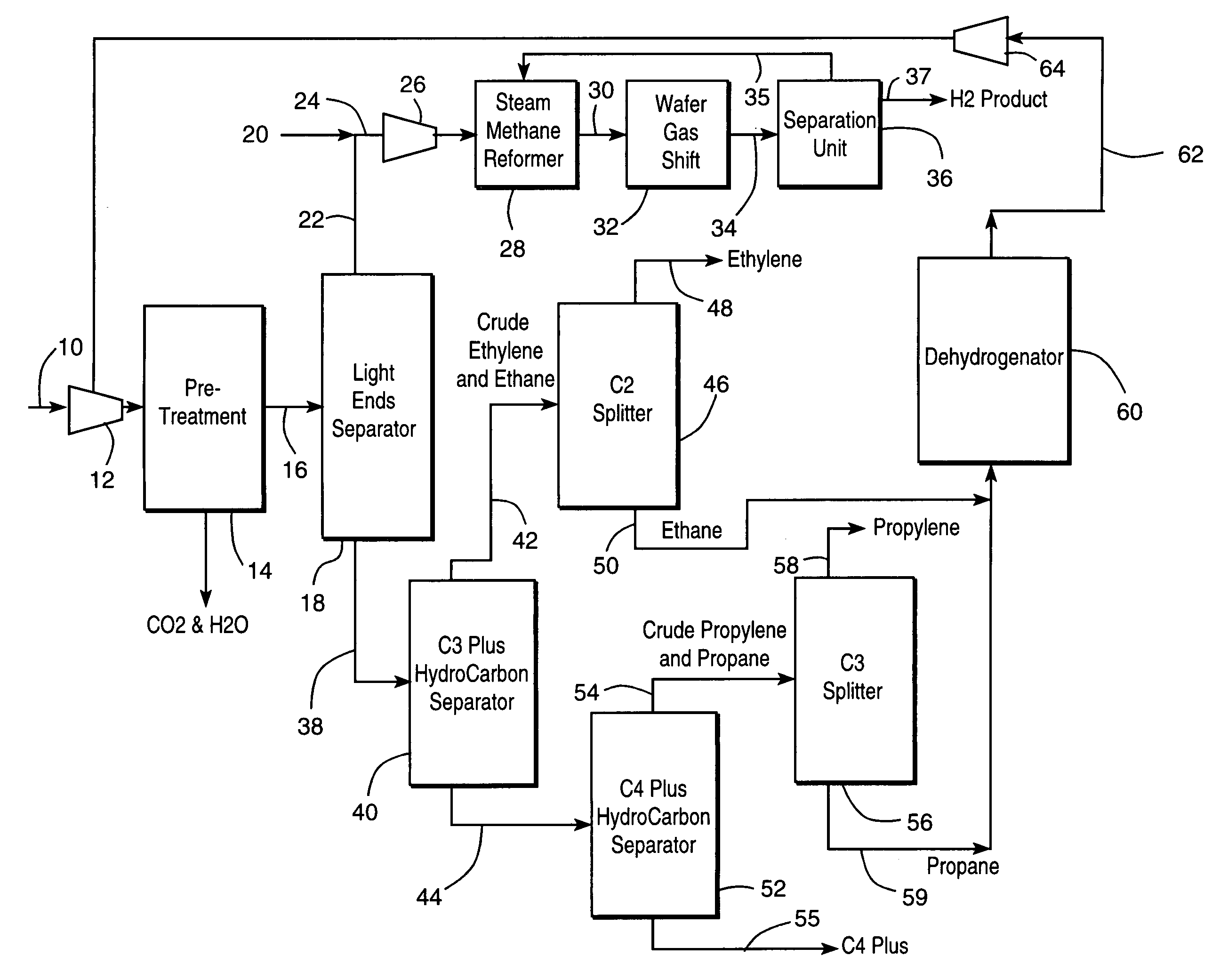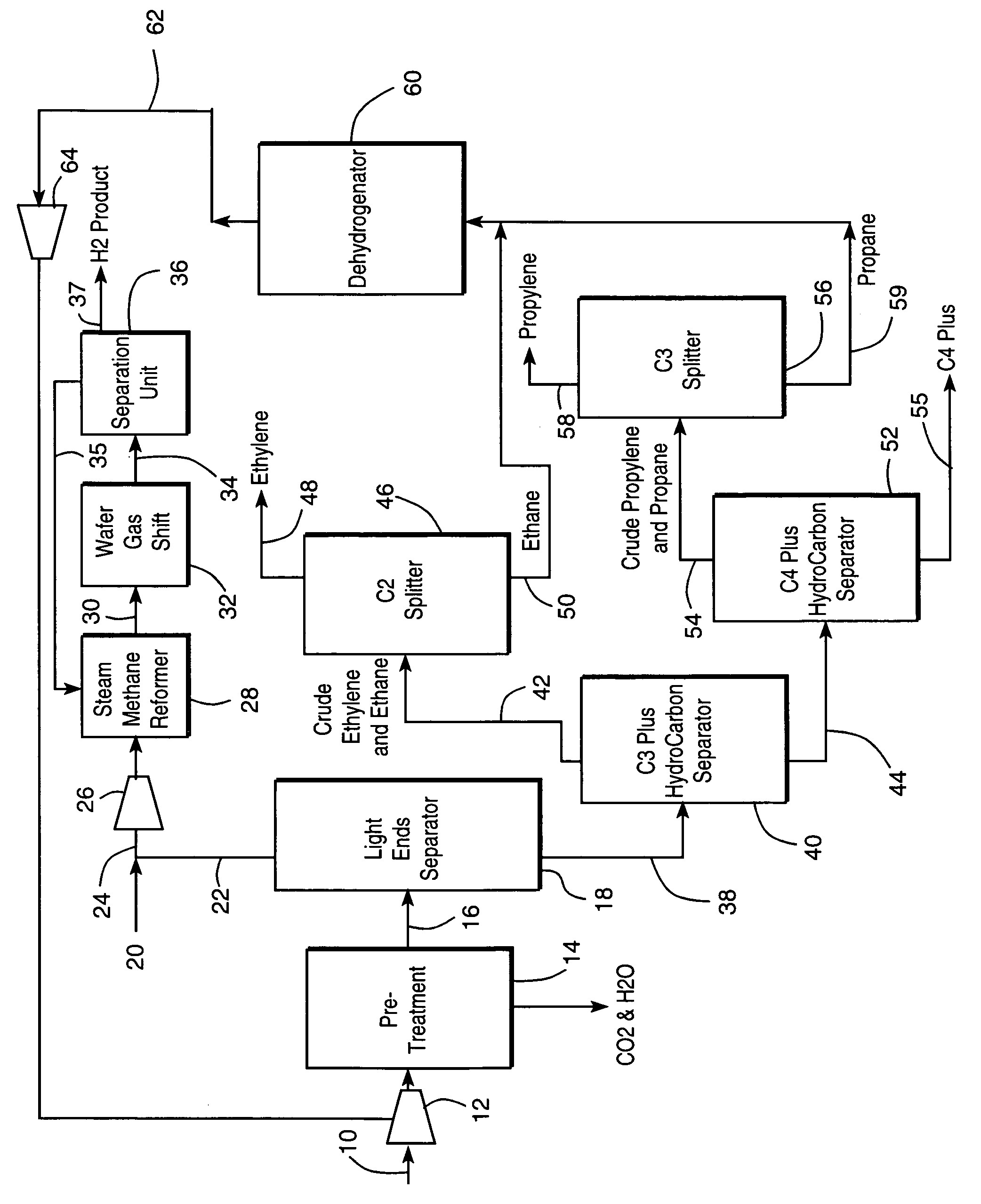Integrated olefin recovery and hydrogen production from refinery off-gases
a technology of olefin recovery and hydrogen production, which is applied in the direction of gaseous fuels, fractional condensation purification/separation, fuels, etc., can solve the problems of unfavorable economics of separating hydrogen from refinery gases that contain less than about 30% hydrogen, inability to direct use refinery gases that contain significant amounts of olefins in steam methane reformers, and inability to achieve direct use of refinery gases that contain significan
- Summary
- Abstract
- Description
- Claims
- Application Information
AI Technical Summary
Benefits of technology
Problems solved by technology
Method used
Image
Examples
Embodiment Construction
[0018]With reference to the FIGURE, a feed stream 10 composed of a refinery off-gas is compressed in a compressor 12 to a pressure of about 300 psig. The refinery off-gas can be obtained from a fluidic catalytic cracker, a coker or can be all of the refinery off-gases produced in the refinery. The resultant compressed stream is then pretreated in a conventional pretreatment system 14 that can include a catalytic hydrogenation reactor to convert acetylene to ethane, a unit for the catalytic removal of residual molecular oxygen, for instance a reactor with a sulfided nickel catalyst, a caustic or amine scrubber to remove carbon dioxide and hydrogen sulfide and a drying unit such as a molecular sieve thermal swing adsorption unit to remove the moisture content.
[0019]The resultant treated feed stream 16 is then introduced into a light ends separator 18 that serves to separate the light ends from the heavy ends, in other words, methane, hydrogen and nitrogen (light ends) from hydrocarbon...
PUM
| Property | Measurement | Unit |
|---|---|---|
| pressure | aaaaa | aaaaa |
| volume | aaaaa | aaaaa |
| heat | aaaaa | aaaaa |
Abstract
Description
Claims
Application Information
 Login to View More
Login to View More - R&D
- Intellectual Property
- Life Sciences
- Materials
- Tech Scout
- Unparalleled Data Quality
- Higher Quality Content
- 60% Fewer Hallucinations
Browse by: Latest US Patents, China's latest patents, Technical Efficacy Thesaurus, Application Domain, Technology Topic, Popular Technical Reports.
© 2025 PatSnap. All rights reserved.Legal|Privacy policy|Modern Slavery Act Transparency Statement|Sitemap|About US| Contact US: help@patsnap.com


